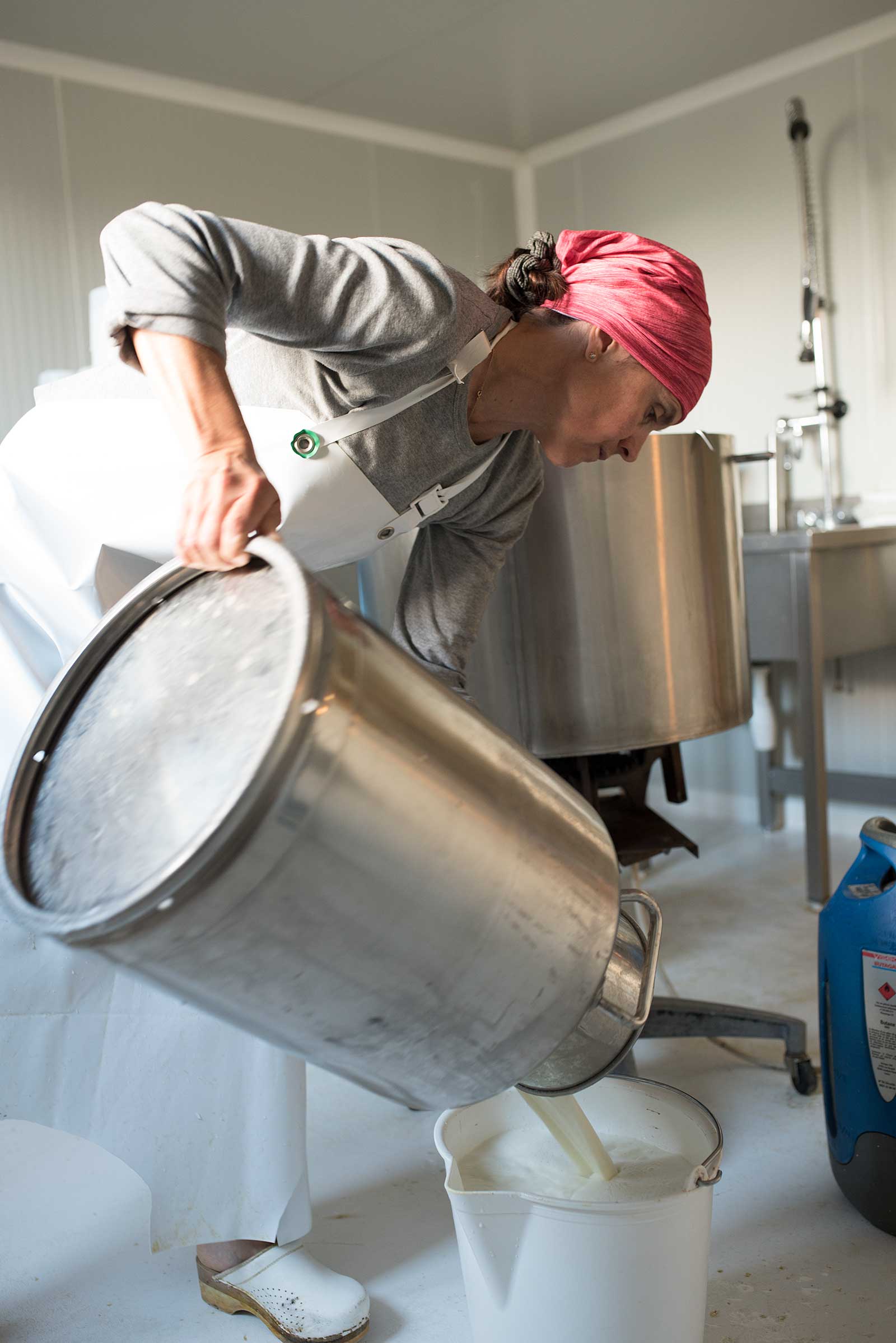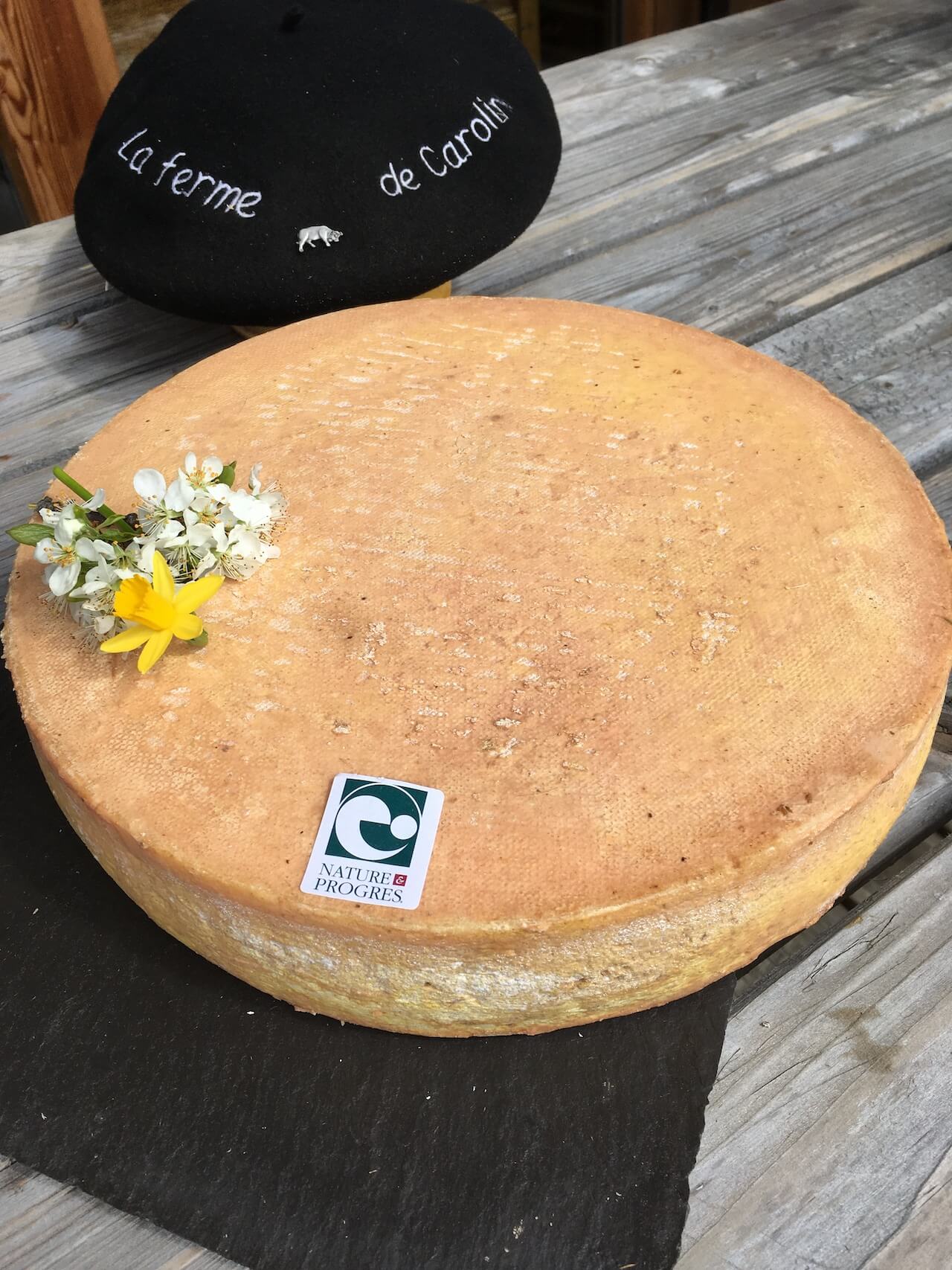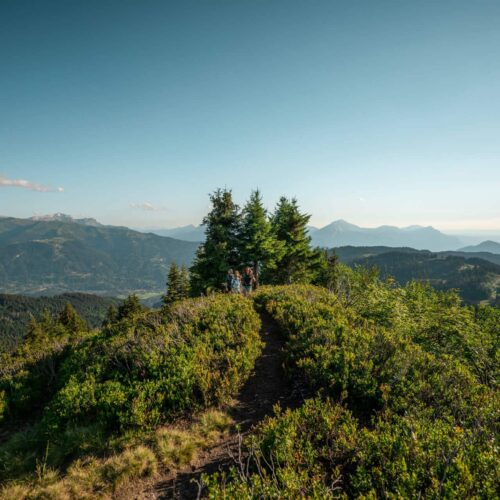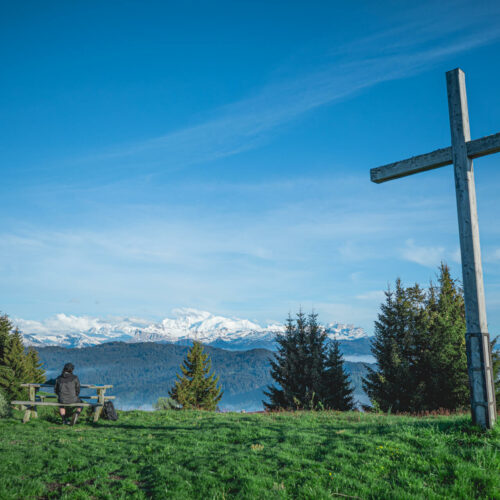Did you say cheese ? The emblematic cheese producers of our mountains are the vital link in a whole chain of values. Generations of pastoralism and mountain grazing have shaped Les Gets and helped make this landscape into the recreational treasure trove we know today. Mountain pastures in summer, ski slopes in winter, and always an Opinel knife at the ready to cut you an amazingly tasty piece of raw-milk cheese.
We take you on a walk in the mountains to discover the local farms and their gourmet heritage.
Raclette des Reines, wickedly good
Name: Raclette des Reines.
Producer: La Ferme de Caroline, Route de Chavannes, Caroline and Noël Anthonioz.
Characteristics: cheese made entirely from the milk of Hérens cows, a mountain breed with horns and a black stocky body.
Weight: about 4.5 kg.
Rind: orangey and quite thin.
Texture: ivory coloured, creamy and dotted with small holes.
Aromas: mountain pastures and raw milk. Full of character yet easy on the taste buds.
Production period: all year round.
Maturing: 2 1/2 to 3 1/2 months.
Serving tips
Forget non-stick pans, with raclette cheese you’re supposed to use a “raclette” (scraper). A half-wheel of cheese licked by the flames of a wood fire, boiled potatoes and a few slices of dried Hérens meat. Delicious!
Hérens, Nature & Progress
The milk from the Hérens cows bred by Caroline and Noël Anthonioz is as rich as can be. In summer, the queen of the herd and her subjects enjoy a grass-and-wildflower banquet on the Mouille Ronde mountain pastures. “There’s always a queen in a herd of Hérens cows” says Noël, who’s totally besotted with this breed that has always grazed in the mountains. For the Hérens is an endemic breed of the Alpine arc, a full-blood mountain-dweller with a 5,000-year history. Although she’s not the greatest dairy cow in terms of volume, her milk reaches the highest summits of nutritional quality!
Caroline and Noël have about twenty cows as well as goats of rustic breeds. They run their farm with an ecofriendly “Nature & Progress” approach that respects life, the land and the people that live on it.
Chevrotin cheese, the taste of the land
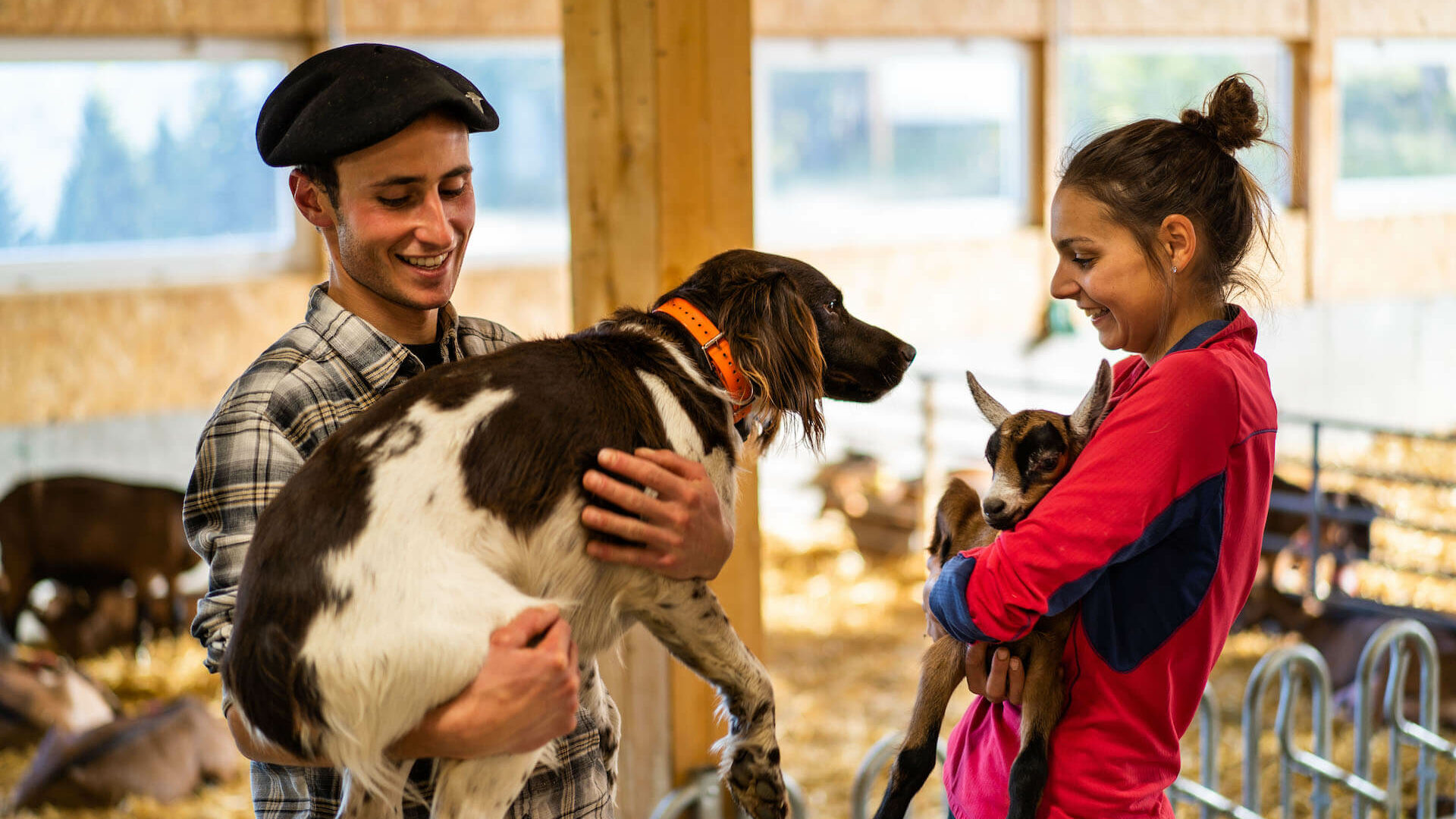
Name: Chevrotin AOP.
Producer: Chèvrerie des Félires, Route du Mont Caly, Léa and Emmanuel.
Characteristics: a round-shaped, washed-rind pressed raw cheese typical of the Savoie mountains.
Weight: 250 to 350g.
Rind: pinkish, sometimes almost beige/yellow, covered in a fine white bloom.
Texture: soft, creamy texture, ivory colour, with virtually no holes.
Aromas: mild as cotton wool, with goaty hints of great finesse.
Production period: practically all year round. The goats stop producing milk in October and November.
Maturing: Minimum 21 days and up to 1 month on spruce-wood boards in a brick cellar.
Serving tips
On a cheese platter. Remember to remove it from the refrigerator 30 minutes beforehand. Serve with an autumn loaf containing figs, for example. In cooking, it is the ideal cheese for “tartichèvre”, the goat’s cheese variant of tartiflette. Extremely tasty and easy as pie.
Alpine goats & Mont Blanc
The 80 Alpine goats of the Félires goat farm live in a picture-postcard setting, against the beautiful backdrop of the roof of Europe. This local breed flourishes on the steep mountainside. Léa and Manu choose not to remove the goats’ horns even if it means they get a few bruises. At 1,490 metres above sea level, the goats graze on a menu of rich grass and pure mountain air. The end result is a selection of beautifully-made farm cheeses – tomme, crottin and sérac – that perpetuate the purest of Savoie traditions.
Both in and of their time, Manu and Léa showcase the land and their expertise at this gorgeous goat farm.
Ash-coated goat cheese, great texture
Name: ash-coated goat cheese log.
Producer: La Chèvrerie des Ours, Combe de Magy, Chemin des Grangettes, Véronique Sublet.
Characteristics: soft texture and naturally-forming rind covered in wood-ash.
Weight: cylinder of about 10 x 3 cm.
Rind: soft and creamy, blue-grey colour.
Texture: very white, smooth and creamy.
Aromas: goaty taste of great finesse. The ash adds salt and subtle flavours.
Production period: 8 months of the year, until the goats’ milk dries up
Maturing: 3 days for fresh cheese and up to 15 days for the more creamy, runny versions.
Serving tips
Room temperature with walnut bread and in good company. Or heated in the oven on slices of toast that have been lightly rubbed with garlic, to accompany a salad made with plenty of fresh herbs.
Alpine cuddles from Raiponce, Mulan and Image
Histoire and Image are well-behaved, naturally, but then there’s Heidi and Noiraude who enjoy a spot of boxing in the milking shed. The 70 Alpine goats of the Chèvrerie des Ours goat farm have characters that match their names. “I look after them like chidren”, explains Véronique Sublet, a former teacher’s aide whose passion led her to a different career. From May to September, they graze at the Combe de Magy below Mont Caly. They’re like walking strimmers. They produce large quantities of delicious milk and are amazingly well-suited to the mountains.
Véronique is totally smitten with her herd and they reward her well. A happy goat produces tasty milk and the result is a delicious cheese. Generosity that works both ways.
Le P’tit Gêtois, as local as they come
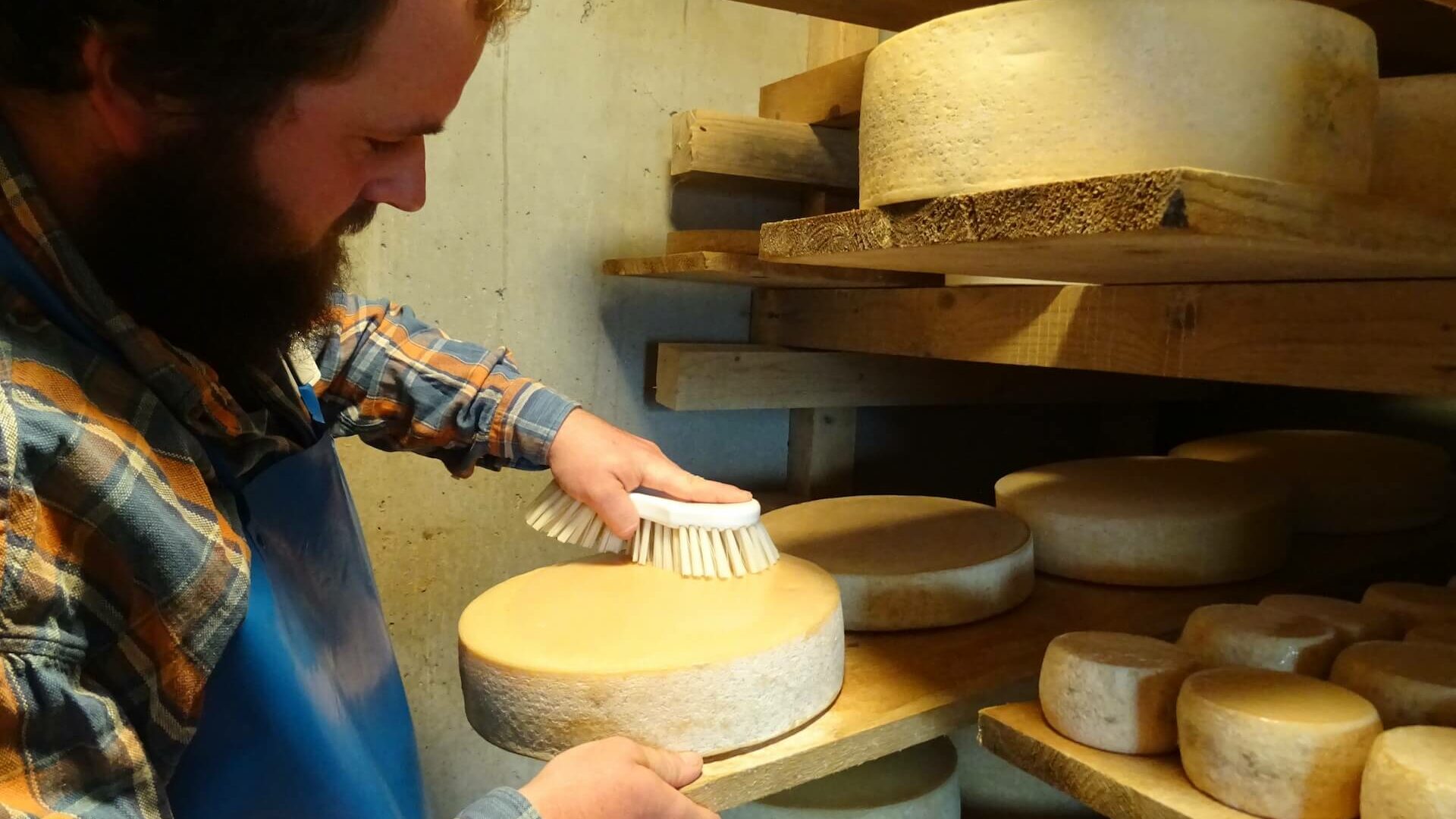
Name: Le P’tit Gêtois.
Producer: Les Pâtres des Reines, Alpage du Lachat, Pauline and Valentin.
Characteristics: Soft cheese in a spruce-wood ring, from the milk of Hérens, Valdostana and Abondance cows.
Weight: 500g, flat and round.
Rind: orangey with a naturally-occurring white bloom.
Texture: ivory in colour and creamy as can be.
Aromas: milky taste from the raw milk, with woody hints produced by the spruce wood.
Production period: winter
Maturing: 21 days to 1 month in a naturally cool, underground stone cellar.
Serving tips
With a rye or einkorn bread, or one made with a traditional bread flour. It can also be melted over hot potatoes and washed down with a fine, local craft beer.
The poetry behind the Valdostana breed
The aptly-named piebald Valdostana cow comes from the Aosta Valley. From a distance it looks much like the Abondance breed except that it has no “glasses” and is shorter and stockier. Valdostanas are really cut out for mountain life. At the farm Les Pâtres des Reines, the Valdostanas live in a 10-strong herd that also includes Hérens and Abondance cows.
Pauline and Valentin, aged 24, run a pleasant farm where the produce is both tasty and healthy. Nature takes care of everything, from the troughs to the treatments. Organic feed, animal wellbeing and responsible farming are the priorities that led them to join the “Agriculture Poétique” network.

